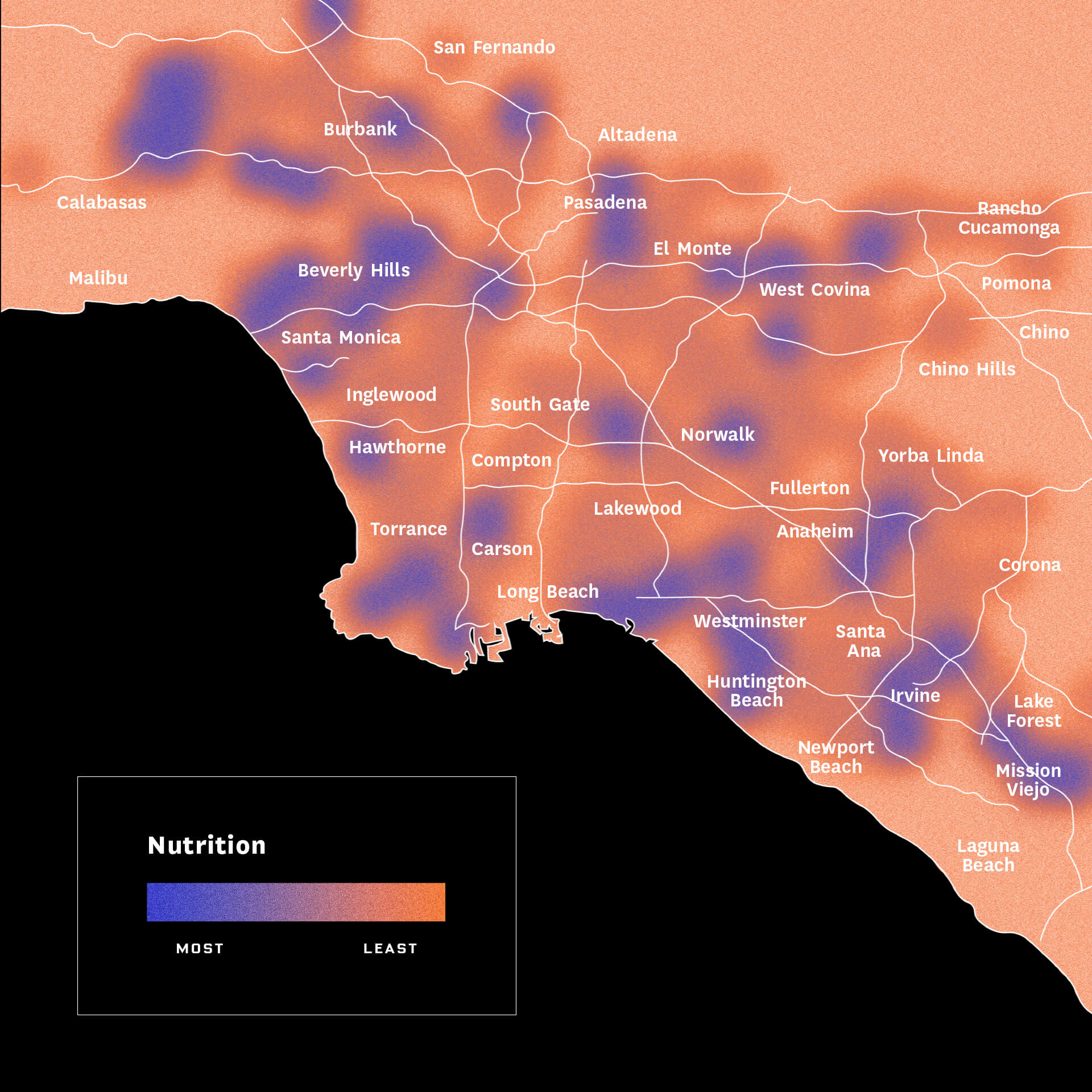To Live and Eat in L.A.
We are not all equal when it comes to food access, and this is highly correlated to where we live. Researchers at the Information Sciences Institute, a unit of USC Viterbi, recently mapped the nutritional quality of the urban foodscape in Los Angeles, using machine learning to analyze information on digital menus for all restaurants, from top-100 chains to small mom-and-pop operations.
The work, recently honored by the NIH National Institute of Minority Health, will ultimately inform decisions with the potential to improve zoning policies to increase access to healthy, nutritional options in disadvantaged communities.
The research, which also relies on Yelp data and Edamam, a nutrition database with over 50 million recipes online, avoided overly simplistic measures of food, noting the positives of “limited service” options like Sweetgreen, Veggie Grill or Chipotle.
“It may seem like there’s a food swamp in Venice because there are still a lot of unhealthy outlets, but when you examine it, there are also a lot of salad joints there. That’s something we don’t see in East or South L.A.,” said Abigail Horn, the lead ISI researcher.
Hispanic neighborhoods offer particularly healthy options thanks to the presence of beans, breakfast burritos and soups on their menus, according to the study.
Finally, researchers found a surprising amount of unhealthy options, around the University Park neighborhood.




